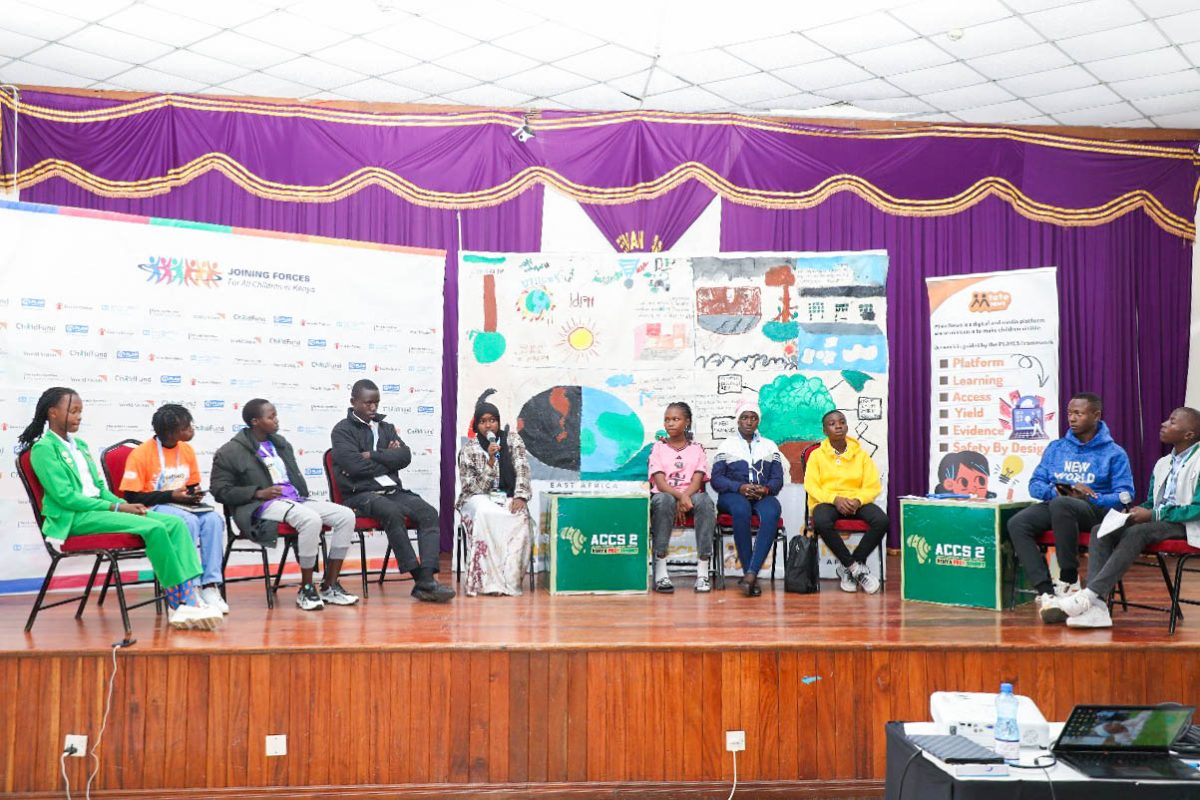Written by Alice Njoki
On August 22, 2025, children from all 47 counties in Kenya gathered at Milele Hotel in Nairobi for the second African Children’s Climate Summit (ACCS 2). It was a day when children came forward to speak about how climate change is affecting their lives. Their stories were powerful and honest, showing the real struggles they face every day.
Ibrahim, a boy from Garissa, told us how the heavy rains destroyed houses and displaced many families. “Around the camp where we were living, I witnessed 10 of my friends dying in the rain 2023/2024 ,” he said. He explained that because the houses were destroyed, people had to live outside with no shelter. Many women, desperate to survive, were forced into selling themselves just to get money. “People are suffering so much,” Ibrahim said. Despite all this, he has a garden where he plants vegetables. “I don’t charge anyone, people can just come and take from the garden, but they have to water the plants so the next person can also get something.” This garden is where many people rely on to get food every day.
Children from different counties shared similar painful stories:
- In Marsabit, children cannot keep clean because there is no water in schools, and many suffer from malnutrition. Hospitals lack proper facilities to care for them.
- In Turkana, drought forces children to migrate with their livestock, often facing insecurity in new places. Many children only have one meal a day at school, and early marriages have increased because parents exchange children for basic needs.
- In Kitui, low rainfall has caused low food production, leaving many children malnourished and affecting their mental health.
- In Nairobi and Mombasa, industrial pollution and rising temperatures make it hard for children to focus in class, while poverty grows as climate change hits families.
- The Deep Problems Behind the Stories
These children and their communities face many problems because of climate change:
Food is harder and harder to find. Droughts dry up crops and floods wash them away. Roads get damaged, making it tough for food to reach markets.
Many children fall ill with diseases caused by dirty water and poor hygiene.
Because of hunger and poverty, some girls are forced into early marriage or harmful practices like FGM.
Floods destroy homes and schools. Children lose their safe places to learn and grow.
Garbage piles up in villages and towns, creating places for disease to spread.
Despite everything, these children want change. They want to be heard and to help solve these problems:
- They want to be part of decisions about climate change. Their voices must count.
- Community gardens like Ibrahim’s are being started to help feed families.
- They want early warnings about droughts and floods so their families can prepare and stay safe.
- Children want to learn new ways to farm that don’t depend so much on weather, like using rainwater harvesting and solar pumps.
- They want the government to support schools with food, water, and good health care.
What Needs to Be Done?
From the summit, they shared clear ideas for what Kenya must do:
Focus help where it is needed most, such as in Samburu, Turkana, and Marsabit.
Support families to farm on their own land to grow food all year round.
Protect children by enforcing laws against child trafficking, early marriage, and violence.
Teach people to keep the environment clean, stop burning rubbish, recycle, and plant more trees.
Use technology like mobile alerts to warn communities before disasters hit.
Build schools and hospitals that can withstand floods and droughts.
Provide counseling and safe spaces for children who have been through hard times.
Most importantly, listen to children’s ideas and involve them in making decisions.
What should the government do?
The children’s message to their leaders was too:
- Include children in climate talks and plans because their future depends on it.
- Deliver food and clean water to schools where children go hungry.
- Ensure children in dangerous places like Turkana are protected and their security is improved.
- Provide good medical care and keep schools open, especially during disasters.
- Support communities with climate education so everyone understands what can be done.
Kenyan children face the harsh reality of climate change everyday they want action and hope for a safer future

